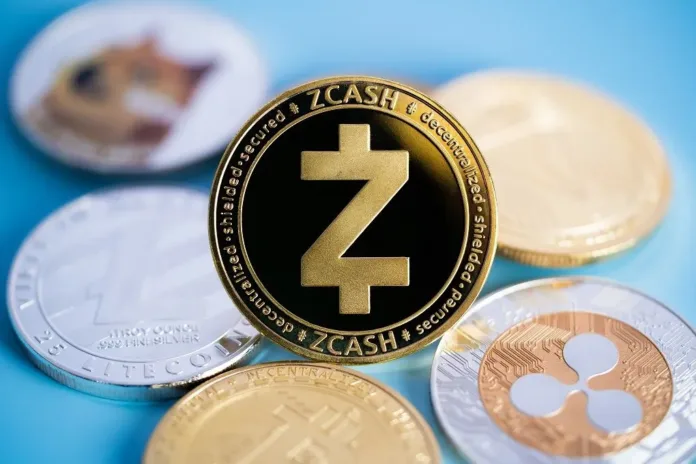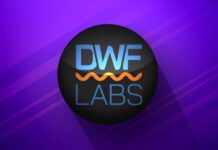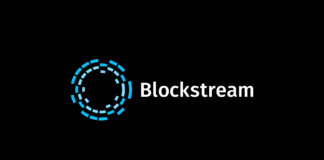In the ever-evolving world of cryptocurrency, Zcash stands out as a privacy-focused digital asset that has garnered significant attention. As investors and enthusiasts look to the Zcash future and potential Zcash price predictions, the question of is zcash a good investment becomes increasingly relevant. This Zcash cryptocurrency, known for its anonymous transactions and network upgrades, has experienced its fair share of price volatility, mirroring the broader crypto adoption trends.
This article delves into the factors that may shape ZEC price and the broader Zcash ecosystem, examining its technological roadmap and the role of privacy coins in the crypto ecosystem. We’ll explore potential ZEC price forecast scenarios for Zcash from 2024 to 2030, taking into account the impact of regulatory developments, ZEC market sentiment, and the cryptocurrency’s unique features. By analyzing these elements, we aim to provide insights into whether Zcash could be a good investment and what the future might hold for this innovative digital currency built on blockchain technology.
Related Read: Toncoin Price Forecast: 2024-2030 Insights and Trends
The Role of Privacy Coins in Crypto
Growing Demand for Financial Privacy
In the evolving landscape of cryptocurrency, financial privacy has gained significant importance. This concept, while not new, has taken on a new dimension in the realm of zcash to bitcoin trading . Financial privacy refers to the ability to carry out transactions without revealing one’s identity or financial details. While cryptocurrencies inherently offer a degree of anonymity, many crypto exchanges now require detailed personal information from users due to regulatory requirements, compromising their privacy .
This has led to a growing interest in anonymous crypto trading platforms and digital wallets, which aim to preserve users’ financial privacy while facilitating transactions . These platforms offer several benefits:
- Enhanced security: By keeping personal information and transaction details hidden, traders can reduce their exposure to potential security threats .
- Personal freedom: Many crypto traders value the ability to conduct transactions without outside interference or scrutiny .
- Protection from discrimination: Preserving privacy can shield traders from potential bias based on their financial activities .
Zcash’s Position in the Market
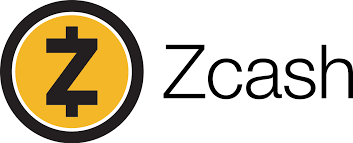
Zcash, one of the leading privacy coins, has established itself as a significant player in this niche market. Created to provide users with the utility of Bitcoin while also offering enhanced privacy features, Zcash employs advanced cryptographic techniques to protect user privacy . The Zcash blockchain utilizes zk-SNARKs (Zero-Knowledge Succinct Non-Interactive Argument of Knowledge), a form of zero-knowledge cryptography that allows for transaction validation without revealing underlying information . This technology enables Zcash to offer two types of transactions:
- Transparent transactions: Similar to Bitcoin transactions.
- Shielded transactions: These hide transaction metadata, giving users control over their privacy .
Zcash’s approach has garnered support from notable figures in the crypto community. Edward Snowden, for instance, has argued that Zcash’s development by actual cryptographers makes it safer to use than some other privacy coins . However, ZEC market analysis reveals that Zcash’s position in the market is not without controversy. Some experts have raised concerns about its level of centralization, which could potentially undermine its utility as a privacy coin .
Related Read: Crypto Scammers Breach Trump Family Accounts, Promote Dubious Meme Token
Regulatory Challenges
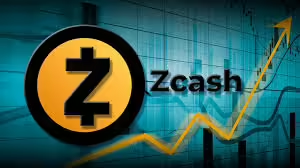
The rise of privacy coins like Zcash has not gone unnoticed by regulators. As the usage of cryptocurrencies grows among investors, companies, and even some central banks, regulatory focus has intensified . Key issues include:
The regulatory landscape is evolving alongside market expansion, with state and federal regulators and legislators considering various approaches to add clarity . However, this evolving landscape has created gaps and overlaps as crypto technology firms connect to traditional financial systems and regulated banking entities build out crypto infrastructure .
One of the main challenges is balancing the demand for privacy with the need for regulation. Know Your Client (KYC) regulations, which require users to reveal personal information, can be a deterrent for those valuing anonymity. This may push participants towards decentralized or less regulated platforms, potentially undermining the effectiveness of regulations .
The anonymity associated with cryptocurrency trading has often been exploited, making it challenging to protect consumers from scams and Ponzi schemes without proper regulations . This has led to varying regulatory approaches across different jurisdictions. While privacy coins remain legal in the United States, other major economies have imposed restrictions. Japan banned privacy coins in 2018, with South Korea and Australia following suit . The European Union is also considering bans on “anonymity-enhancing coins” .
These regulatory challenges have led to speculation about the long-term viability of privacy coins. However, proponents argue that privacy coins serve important purposes, such as reducing authoritarian financial control and protecting sensitive information . As the crypto landscape continues to evolve, the role of privacy coins like Zcash will likely remain a topic of ongoing debate and regulatory scrutiny.
Zcash’s Technological Roadmap
Zcash, a privacy-focused cryptocurrency, has been continuously evolving its technological infrastructure to meet the growing demands of the crypto market. The Zcash roadmap is designed with agility, flexibility, and speed in mind, focusing on user needs, ecosystem developments, and potential regulatory limitations . This approach allows for quick adaptations and seizing opportunities as they arise.
Planned Upgrades
Zcash has implemented several Zcash protocol upgrades to enhance its functionality and privacy features. A Zcash technical overview reveals that the Heartwood upgrade, introduced in July 2020, brought two significant improvements: Shielded Coinbase and Flyclient support . Shielded Coinbase allows for complete shielding of ZEC from the creation process, enhancing privacy. Flyclient, on the other hand, improves the efficiency of block verification and has the potential to boost ZCash’s market utility and cross-chain interoperability .
Another notable upgrade was Canopy, which focused on creating a new Zcash development fund for the next four years . The most recent upgrade, NU5, arrived with the Halo Arc product suite release, showcasing the continuous evolution of ZK-SNARK technology in the Zcash protocol .
Scalability Solutions
To address scalability challenges, Zcash has implemented several measures:
- Increased block size: The block size has been doubled from 1 MB to 2 MB, allowing for more transactions per block and resulting in faster processing times and lower fees during network congestion.
- Batched transactions: Zcash utilizes a feature called Sapling, which enables multiple transactions to be batched into a single transaction, reducing the number of transactions that need to be processed.
- Optimizing zk-SNARKs: Continuous efforts are being made to improve the efficiency of Zcash’s zero-knowledge proof protocol, optimizing computational requirements without compromising privacy.
- Layer 2 solutions: Zcash is exploring the use of layer 2 solutions such as the Lightning Network to reduce the load on the main blockchain and improve transaction processing speeds.
Sharding is another scalability solution being considered. It has the potential to increase transaction throughput, improve security, and enhance decentralization. However, implementing sharding also introduces challenges that need to be carefully managed to ensure the network remains secure, decentralized, and private.
Interoperability Efforts
Zcash is making strides in improving interoperability with other blockchain networks. The introduction of Flyclient support in the Heartwood upgrade is a step towards this goal, as it can potentially improve cross-chain interoperability.
The Zcash team is also exploring DEX (Decentralized Exchange) integration, which is expected to be implemented as they get closer to supporting Maya for Zcash. This integration could potentially enhance Zcash’s interoperability with other cryptocurrencies and decentralized finance (DeFi) platforms.
Another significant development is the introduction of ZCash TEX addresses, designed to meet exchange requirements without completely sacrificing user privacy. These addresses only accept funds from Transparent Addresses, not from Shielded Addresses, which helps in meeting regulatory demands while maintaining a degree of privacy.
The Zcash team is also working on improving wallet functionality. The Blockchain Commons team, for instance, is developing tools like Animated QRs for passing larger amounts of data across an airgap, and SSKR for protecting seeds through sharding. They are also exploring the inclusion of Zcash in their Gordian Seed Tool, which would allow for the generation of various types of Zcash addresses from stored seeds.
Lastly, the implementation of FROST (Flexible Round-Optimized Schnorr Threshold) signatures is seen as the next frontier for protecting digital assets, with Zcash being at the forefront of this development. This could potentially revolutionize how transactions are signed and verified on the Zcash network.
Zcash Price Scenarios: 2024-2030
Bull Case
The bull case for Zcash (ZEC) presents an optimistic outlook for the privacy-focused cryptocurrency. According to Сhangelly’s analysis, ZEC is expected to experience steady growth from 2024 to 2030. In 2024, the maximum price of Zcash could reach USD 32.02, with an average trading price of USD 36.59. The bullish trend is anticipated to continue, with the average price potentially rising to USD 53.42 by 2025.
As global adoption increases and more Zcash-related financial services are introduced, the price could see significant appreciation. PricePrediction projects that by 2026, Zcash might reach an average price of USD 84.98. This upward trajectory is expected to persist, with some analysts predicting that by 2030, ZEC could trade between USD 335.75 and USD 410.39, with an average cost around USD 347.59.
Factors contributing to this bullish scenario include:
- Increased demand for privacy-focused cryptocurrencies
- Technological advancements and network upgrades
- Growing institutional interest in privacy coins
- Potential regulatory clarity favoring privacy-preserving technologies
Bear Case
The bear case for Zcash presents a more conservative outlook. According to some analysts, ZEC might face challenges in the coming years. In 2024, Сhangelly predicts that Zcash could experience a decline, with the price potentially dropping to USD 25.78 by December. This bearish sentiment is attributed to factors such as regulatory uncertainties and competition from other privacy-focused cryptocurrencies.
DigitalCoinPrice suggests that Zcash might experience high volatility in 2026, with the price fluctuating throughout the year. The average price is expected to fall to USD 89.91 in March before jumping to USD 103.03 in August, indicating a general bearish trend. CoinDataFlow anticipates a decrease in Zcash’s value in 2026, with the highest price potentially hitting USD 93.79.
Factors contributing to this bearish scenario include:
- Regulatory challenges facing privacy coins
- Increased competition in the privacy-focused cryptocurrency market
- Potential technological limitations or security concerns
- Market saturation and diminishing investor interest
Most Likely Outcome
The most likely outcome for Zcash between 2024 and 2030 appears to be a moderate growth trajectory with periods of volatility. Based on various predictions, here’s a year-by-year breakdown:
2024: The average trading price is expected to be around USD 36.59, with a potential range between USD 27.44 and USD 32.02.
2025: Zcash could see steady growth, with an average price potentially reaching USD 50.37.
2026: Projections suggest an average price of USD 72.87, with a range between USD 70.84 and USD 86.02.
2027: The average trading cost is expected to be around USD 105.88, with a potential maximum of USD 124.73.
2028: Analysts predict an average trading price of USD 159.92, with a possible range of USD 154.63 to USD 177.87.
2029: The estimated average ZEC price could be around USD 236.94, potentially reaching as high as USD 273.52.
2030: Forecasts suggest an average cost of USD 347.59, with a potential range between USD 335.75 and USD 410.39.
This moderate growth scenario takes into account both bullish and bearish factors, including technological advancements, regulatory developments, and market dynamics. The privacy features of Zcash, coupled with potential improvements in scalability and interoperability, could drive adoption and value appreciation. However, regulatory challenges and competition from other privacy-focused cryptocurrencies may temper growth expectations.
Conclusion
As we wrap up our exploration of Zcash’s potential trajectory, it’s clear that the cryptocurrency’s future is shaped by a complex interplay of factors. The privacy features of Zcash, coupled with ongoing technological advancements, have the potential to drive adoption and value appreciation. However, regulatory challenges and competition from other privacy-focused cryptocurrencies may temper growth expectations. The most likely outcome suggests a moderate growth path with periods of volatility, with projections indicating a possible average price of around $347.59 by 2030.
While these predictions offer insights, it’s crucial to approach them with caution. The cryptocurrency market is known for its unpredictability, and numerous external factors can impact prices. As with any investment, it’s essential to do your own research and understand the risks involved. Remember, neither the author nor hashherald.com is responsible for any losses in the market. In the end, Zcash’s journey from 2024 to 2030 promises to be an intriguing one, reflecting the broader evolution of privacy coins in the crypto ecosystem.
FAQs
What is the expected price of Zcash by 2030?
By 2030, Zcash (ZEC) is anticipated to see a 5% increase in its value, potentially reaching around USD 39.56.
What are the future projections for Zcash’s price by 2040?
The projections suggest that by the end of 2040, Zcash could be valued at approximately USD 155.49, representing a cumulative return on investment of about 359.50%.
Is there a future for Zcash in the cryptocurrency market?
According to current predictions and market analysis, Zcash might experience a slight decline of about -4.8% by September 05, 2024. The market sentiment is currently bearish, with a Fear & Greed Index score of 26, indicating a general market fear.
Disclaimer: The information provided in this article is for informational purposes only and does not constitute financial advice. Investing in cryptocurrencies involves risks, and readers should conduct their own research and consult with financial advisors before making investment decisions. Hash Herald is not responsible for any profits or losses in the process.

